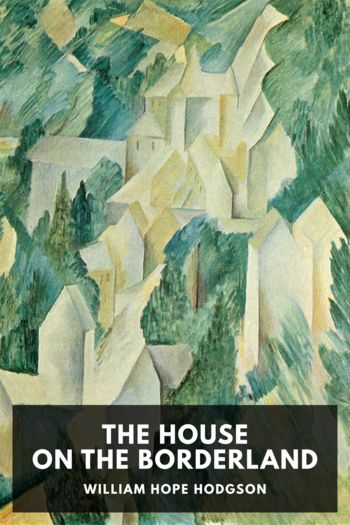Gluck by Diana Souhami (most interesting books to read .TXT) 📗

- Author: Diana Souhami
Book online «Gluck by Diana Souhami (most interesting books to read .TXT) 📗». Author Diana Souhami
The elegance of Bolton House and its studio inspired much admiration. It was a far cry from a simple cottage with the ‘Auntie’ in the garden. Homes and Gardens ran a three-page article in July 1935 on
Miss Gluck, the well-known painter, [who] is the happy possessor of an unspoiled Georgian house and a completely modern and efficient studio, separated from it only by a paved courtyard, with flower beds reflected in a shallow lily pool.
It gave numerous details: the upholstery in tea rose and apricot silks, the pigeons in ivory porcelain, the Broadwood piano in Spanish mahogany and ormolu, Gluck’s collection of glass walking sticks, the vase filled with arums on a gilt console.
Hampstead in the early thirties offered extreme comfort, a rural landscape, the peacefulness of a village, the liveliness of a special club – and all a cab drive away from the West End. From the windows of Bolton, Gluck looked out over Admiral’s House where John Galsworthy lived until his death in 1933. A year or so before he died she painted her view of his house, nestling among mature trees, with one of her typical romanticized wide skyscapes, looking like a country manor house with acres beyond.
Among Gluck’s Hampstead friends who lived close by were the composer Arthur Bliss, Eleanor Farjeon whose musical comedies The Two Bouquets and The Laughing Elephant were on in town, the actor Stephen Haggard, praised for his performances of Raskolnikoff in Crime and Punishment and Constantin Treplef in The Seagull, and whose portrait Gluck painted, and the artist Arthur Watts. The rich and creative lived in the big houses and the tradespeople in the small terraces. It was unremarkable for there to be a Society painter, a woman of independent means, who looked like Ivor Novello and appeared at soirées in a dinner jacket and black tie. In wider society, lesbianism was neither condemned nor condoned. Victorian legislators, when devising punitive sentences for homosexual men, made no reference to homosexual women. The story goes that Queen Victoria did not believe that women behaved in such a way, so there was little point in outlawing what did not occur. Nor was the donning of men’s clothes seen as an act of defiance or subversion. The sexes were polarized in appearance so the assumption was that lesbians who wore men’s clothes were simply women who aspired to be men. Many a well-to-do family had one, living somewhere in the country with a ‘wife’ in skirts, reading the financial pages of The Times, drinking brandy after dinner and seeming to appropriate the supposedly male domains of intelligence and activity.
There was none of the intrigued portrayal of an alliance between sexual subversion and power as existed in, say, Berlin at the same period. Analysis was not encouraged, nor the facts of sexual desire mentioned. The Well of Loneliness caused a stir in 1928, but was swiftly banned. ‘I would rather give a healthy boy or girl a phial of prussic acid than this book’ wrote the leader writer in the Daily Express. (Gluck had read it by 1940.) The book’s author, Radclyffe Hall, a respected member of the PEN Club, dressed in men’s clothes and lived with Lady Una Troubridge, the former wife of an Admiral, but such eccentricities were tolerated provided they did not appear to be connected with sex. Men in skirts (other than on the stage, where all folly was contained) would have been whisked quickly away. For her part Gluck provoked an interesting variety of social responses. She got on extremely well with men of the establishment like Sir James Crichton-Browne, or Edward Maufe, or Sir Wilfrid Greene. They commissioned her to do their portraits and shared with her their conversation, brandy and good cigars. To her family she was the difficult daughter, gifted, but as dependent and unreliable as an adolescent child. To her lovers she was the doomed romantic who merged into their worlds. To art reviewers her talent was frequently commended for its ‘masculine’ strength. As for sexual pleasure of an unorthodox sort, it was thought to be all right for Chelsea and Hampstead.
Arthur Watts lived a few doors away from Gluck at Holly Place. His daughter by his second marriage, Marjorie-Ann, has a clear childhood recollection of Gluck walking the streets of Hampstead in the thirties, with cloak, bow-tie and cane, looking like a small, well-dressed, dandyish Italianate man. Through Arthur Watts Gluck first met Sybil Cookson. He had had a long affair with her in the early twenties. His satirical paintings appeared regularly in Punch and he did illustrations for E. M. Delafield’s Diaries of a Provincial Lady. He gave Gluck a cartoon of his which she kept throughout her life. Captioned ‘The Artist who Loves His Work’ it shows a painter in a studio crammed with paintings, producing more and parting with none. Gluck went to great pains to buy back her own paintings after they had been sold. She sold them because that gave her professional credibility, but thought money a poor exchange for her creations. She wanted them close and felt bereaved when parted from them. On occasion she referred to them as her children.
Both Arthur Watts and his eldest daughter Margaret, who became a costume designer, admired Gluck’s work. ‘Note how modernity is presented frankly, but free from malice, in the sophisticated figure of “Miss Margaret Watts”’ wrote the Morning Star, 3 November 1932, of Gluck’s portrait of her as a student at the Central School of Art. The reviewer described the painting as ‘an uncommonly clever study of the tyranny of up-to-date fashion’.
Margaret Watts had a difficult childhood. Her father went to fight in the First World War soon after





Comments (0)